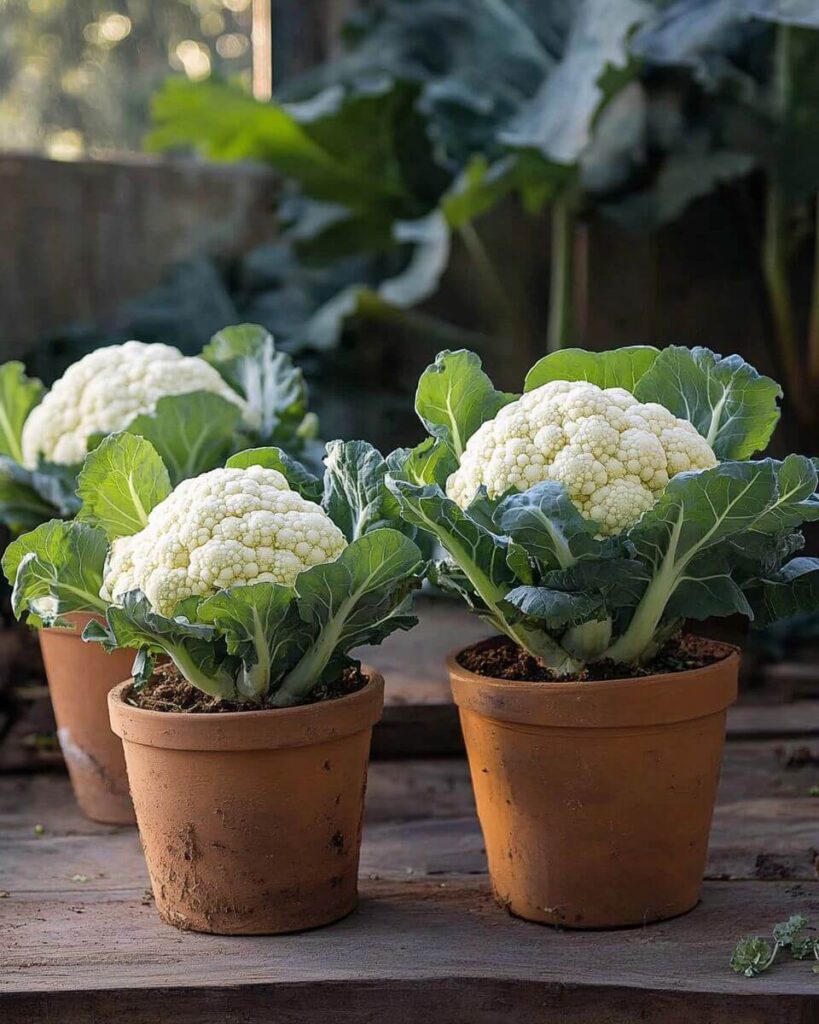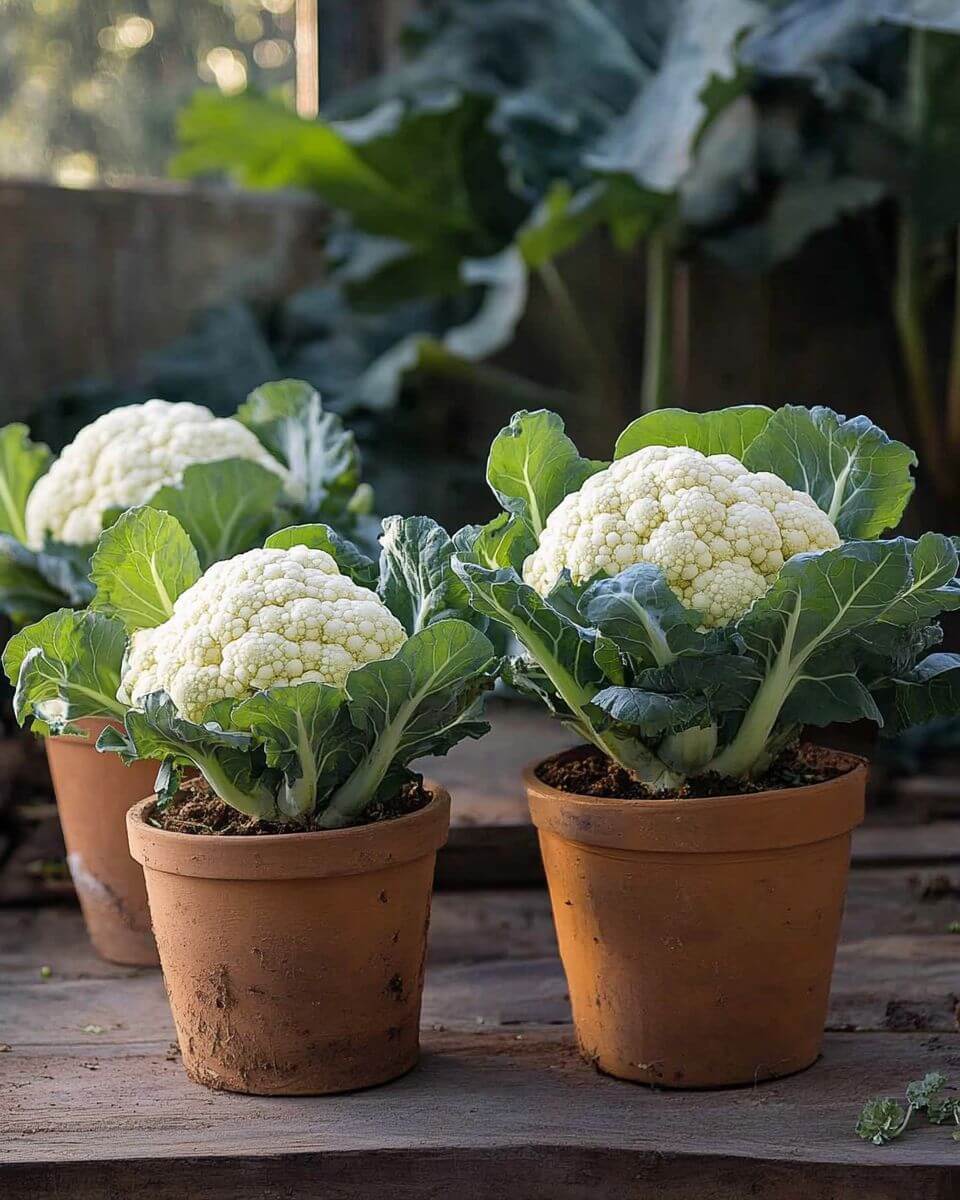Growing cauliflower in containers is an excellent way for gardeners of all levels to enjoy fresh, homegrown vegetables. This method is particularly beneficial for those with limited outdoor space, such as apartment dwellers or urban gardeners. As a cool-season vegetable, cauliflower thrives in pots when given proper care and attention. This guide outlines the essential steps to help you cultivate the largest cauliflower possible in a container, from selecting the right variety to harvesting at peak maturity.
Creating the Ideal Growing Conditions for Cauliflower
Cauliflower grows best under specific environmental conditions. It prefers cool temperatures, ideally ranging from 60-70°F (15-21°C). High temperatures can cause the heads to loosen, leading to a condition known as “buttoning.” For optimal growth, ensure your plant receives at least 6-8 hours of sunlight each day, while providing afternoon shade in particularly warm climates. Keeping the soil consistently moist is crucial, as dry conditions can hinder head development. By maintaining these conditions, you create the perfect environment for robust cauliflower growth.
Selecting the Right Pot and Soil for Maximum Growth
Choosing an appropriate container is key to growing large cauliflower. A pot that is at least 12-18 inches deep and wide will provide ample room for root development. Ensure that your container has adequate drainage holes to prevent excess moisture from accumulating. Use a nutrient-rich potting mix containing organic matter, which will help retain moisture while also allowing proper drainage. Incorporating compost or well-rotted manure into the soil mix will further enhance fertility and support healthy plant growth.
Choosing the Best Cauliflower Variety for Container Gardening
Not all cauliflower varieties are suited for pot cultivation. Compact or dwarf varieties, such as ‘Snowball’ or ‘Amazing,’ are ideal choices since they are bred for smaller spaces. These types mature more quickly and produce dense, flavorful heads. Selecting a variety that suits your climate and container size will increase the likelihood of a successful harvest.

Preparing the Pot: A Step-by-Step Approach
To get started, select a clean pot with proper drainage holes. Fill the container with your prepared potting mix, leaving about an inch of space from the rim. Thoroughly moisten the soil before planting. If using seeds, plant them directly in the soil, spacing them according to the packet instructions. For transplants, dig a hole slightly larger than the root ball and place the seedling at the same depth as in its original container. Gently firm the soil around the plant and water well to help establish the roots.
Planting Cauliflower Seeds: A Comprehensive Guide
When growing from seeds, plant them 1/4 to 1/2 inch deep in the prepared container. Space the seeds 3-4 inches apart to allow for thinning later. Keep the soil consistently moist but not soggy. Seeds typically germinate within 7-14 days. Once the seedlings develop two true leaves, thin them out so that only one healthy plant remains per pot, ensuring adequate space for full growth. If using transplants, plant them according to the pot preparation guidelines.
Watering and Fertilizing for Optimal Growth
Cauliflower requires consistent moisture, so water regularly to keep the soil evenly damp. However, avoid overwatering, as excessive moisture can lead to root rot. Fertilizing every 4-6 weeks with a balanced, water-soluble fertilizer or slow-release granular fertilizer will provide essential nutrients. Be cautious with nitrogen levels, as excessive nitrogen can result in excessive leaf growth at the expense of head development. Adjust your care routine as needed based on your plant’s growth.
Managing Pests and Diseases in Potted Cauliflower
Common pests such as aphids, cabbage worms, and slugs can affect cauliflower plants. Regularly inspect your plants and remove pests manually or use insecticidal soap if infestations persist. To prevent diseases like clubroot or downy mildew, ensure proper drainage and avoid overhead watering. Keeping the area around your pots clean and practicing crop rotation can also reduce the risk of disease. If a plant becomes severely infected, remove it to prevent further spread.
Harvesting Large Cauliflower from Your Pot
Your cauliflower is ready to harvest when the heads are firm, compact, and uniformly colored. This usually occurs 70-100 days after planting, depending on the variety. Use a sharp knife to cut the head, leaving a few leaves attached to provide protection. Harvesting at the right time ensures the best flavor and texture. If the heads start to discolor or separate, harvest immediately to prevent quality loss.
Avoiding Common Mistakes When Growing Cauliflower in Containers
To achieve the best results, avoid mistakes such as using an inadequate pot size, poor soil quality, or planting in extreme weather conditions. Both overwatering and underwatering can negatively impact root health, while insufficient sunlight can result in poor head development. Effective pest and disease management is essential, as is avoiding overcrowding, which can lead to competition for nutrients and limited growth. Learning from these common pitfalls will help you succeed in growing large, healthy cauliflower.
Conclusion: Enjoying the Fruits of Your Labor
With proper care and attention, you can successfully grow large and flavorful cauliflower in a pot. This method of gardening not only provides fresh and nutritious produce but also fosters a sense of accomplishment and a deeper connection to nature. Whether roasted, steamed, or used in your favorite recipes, your homegrown cauliflower will be a delicious addition to your meals. Happy gardening!
